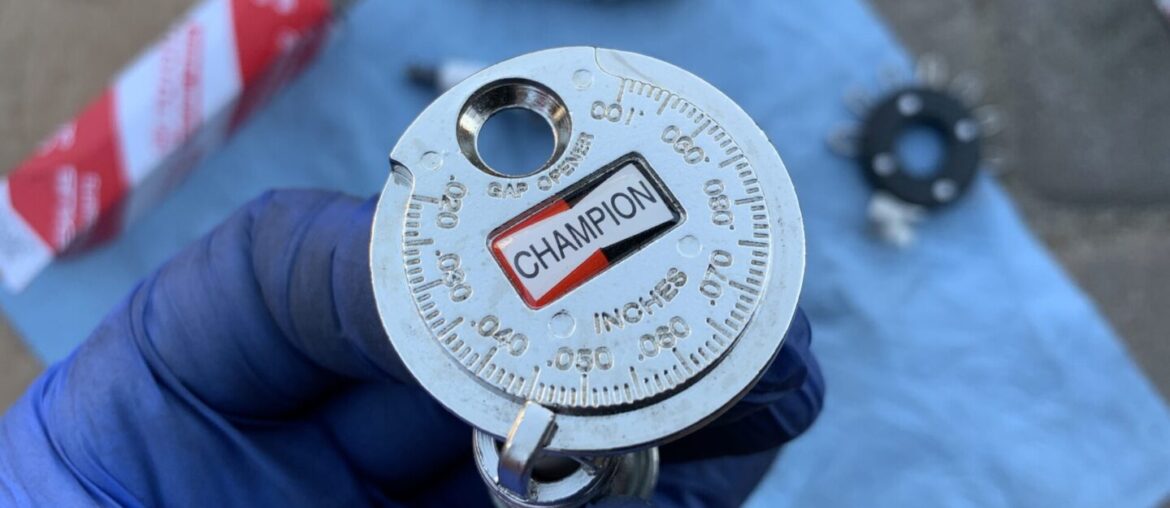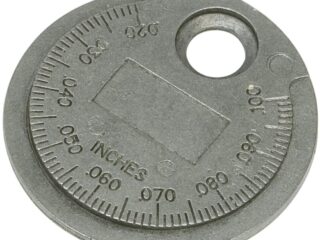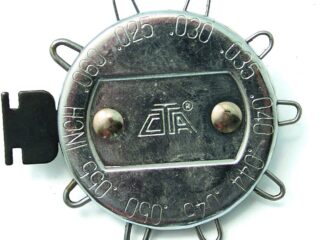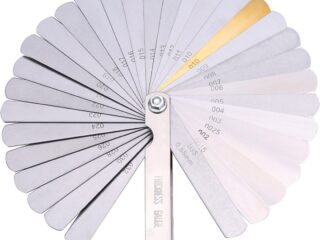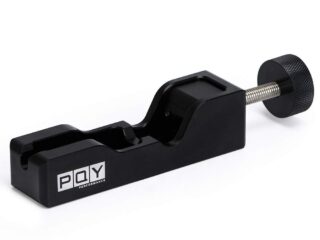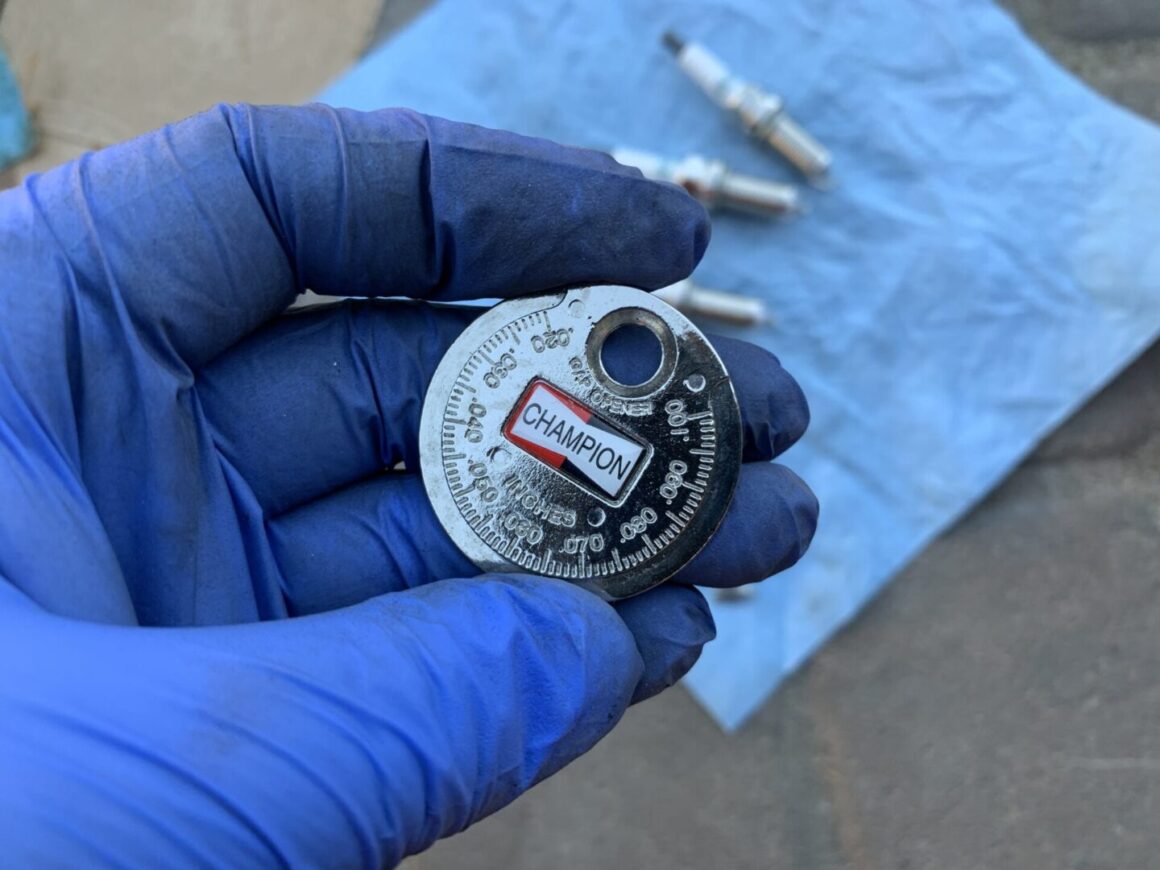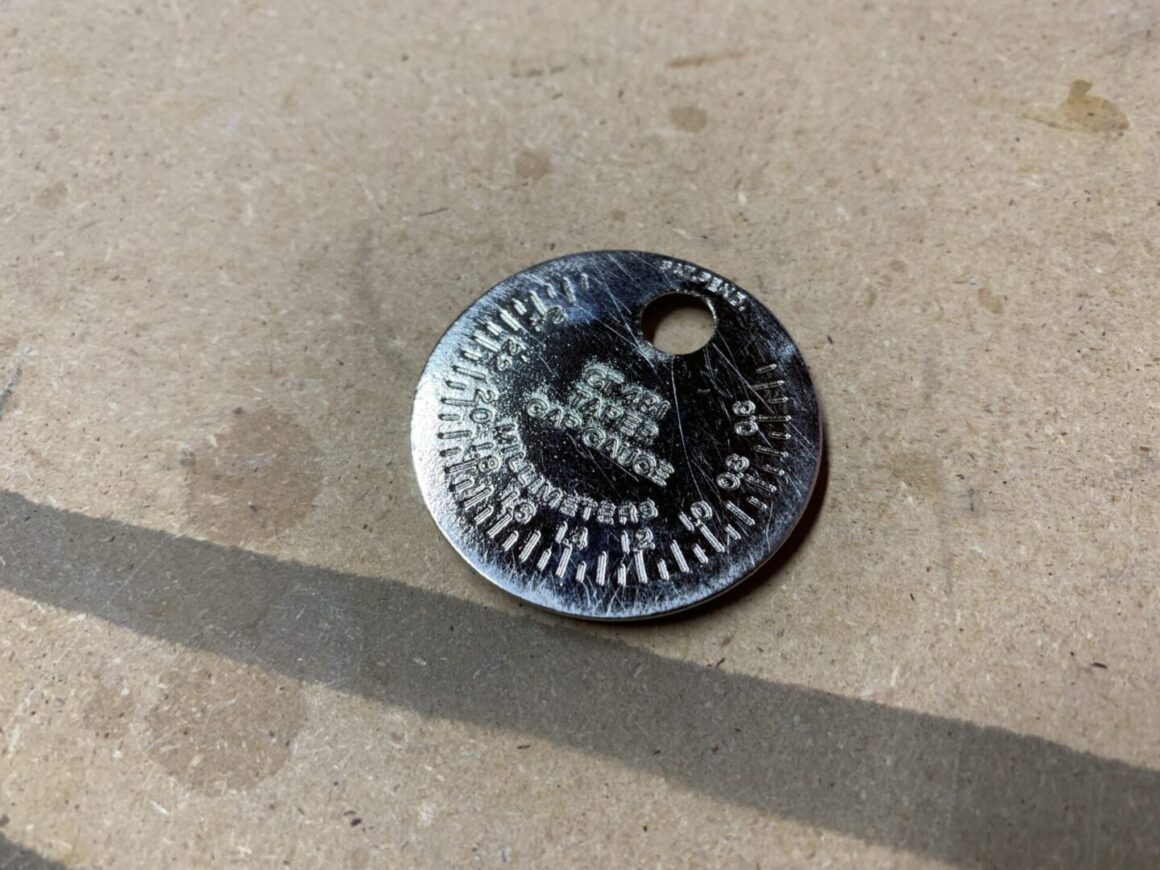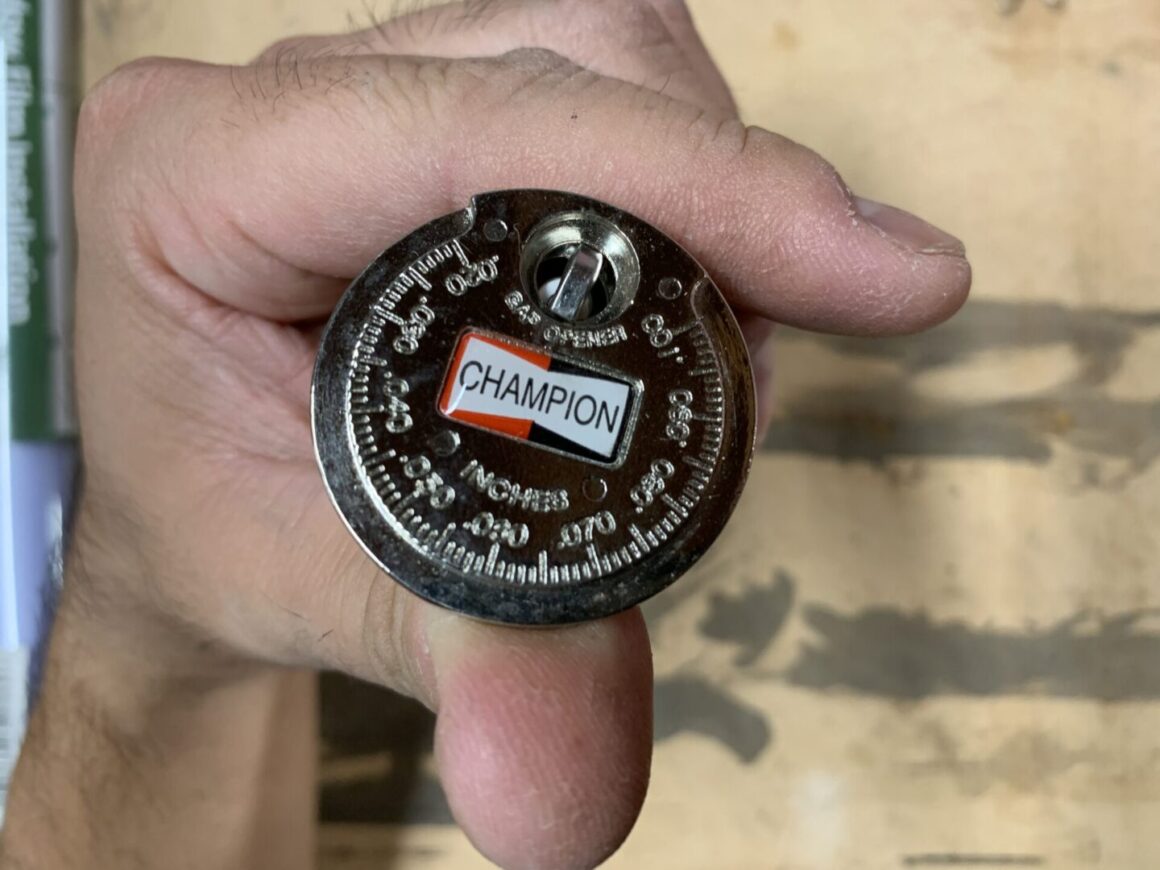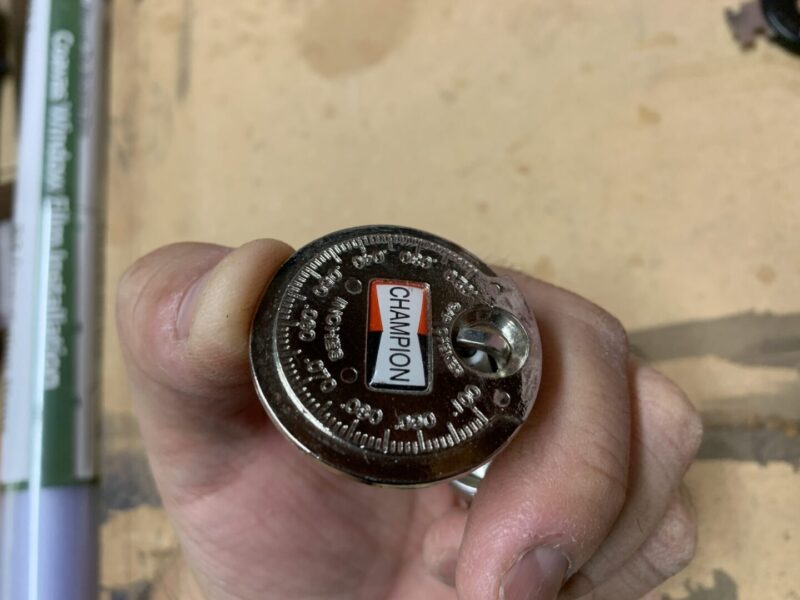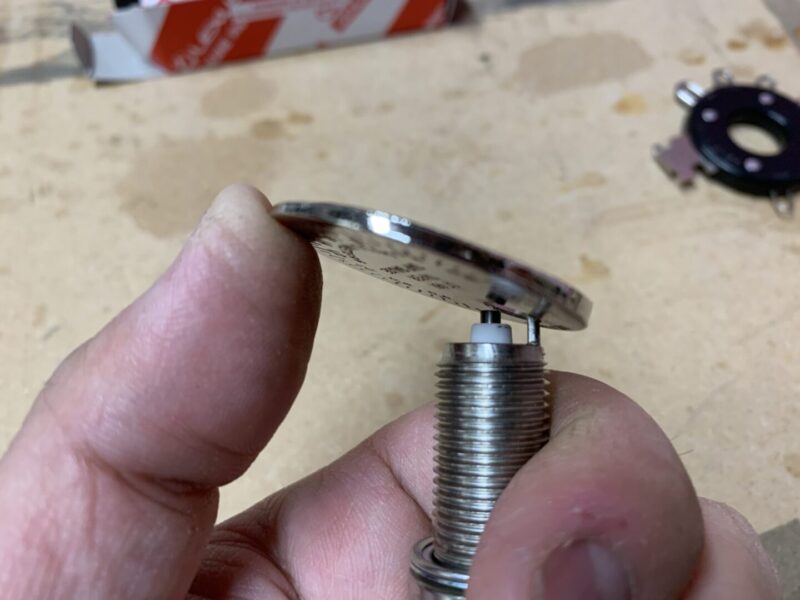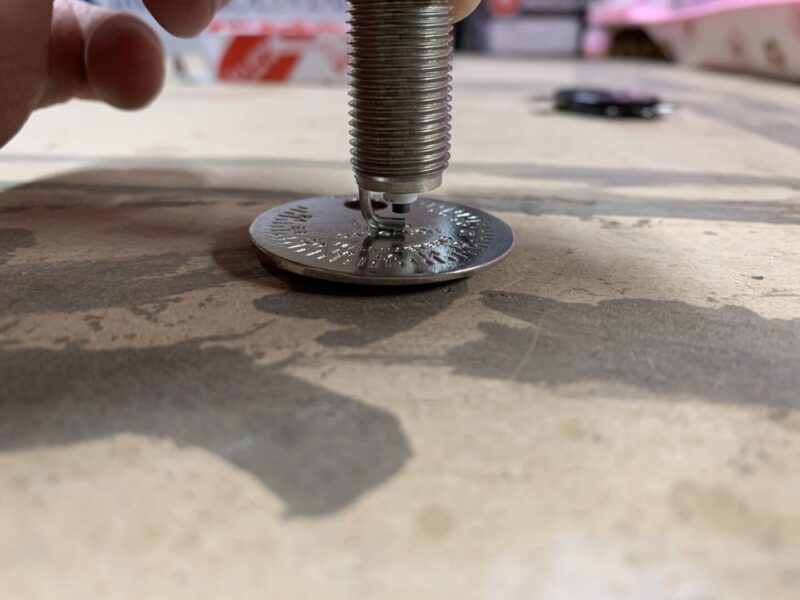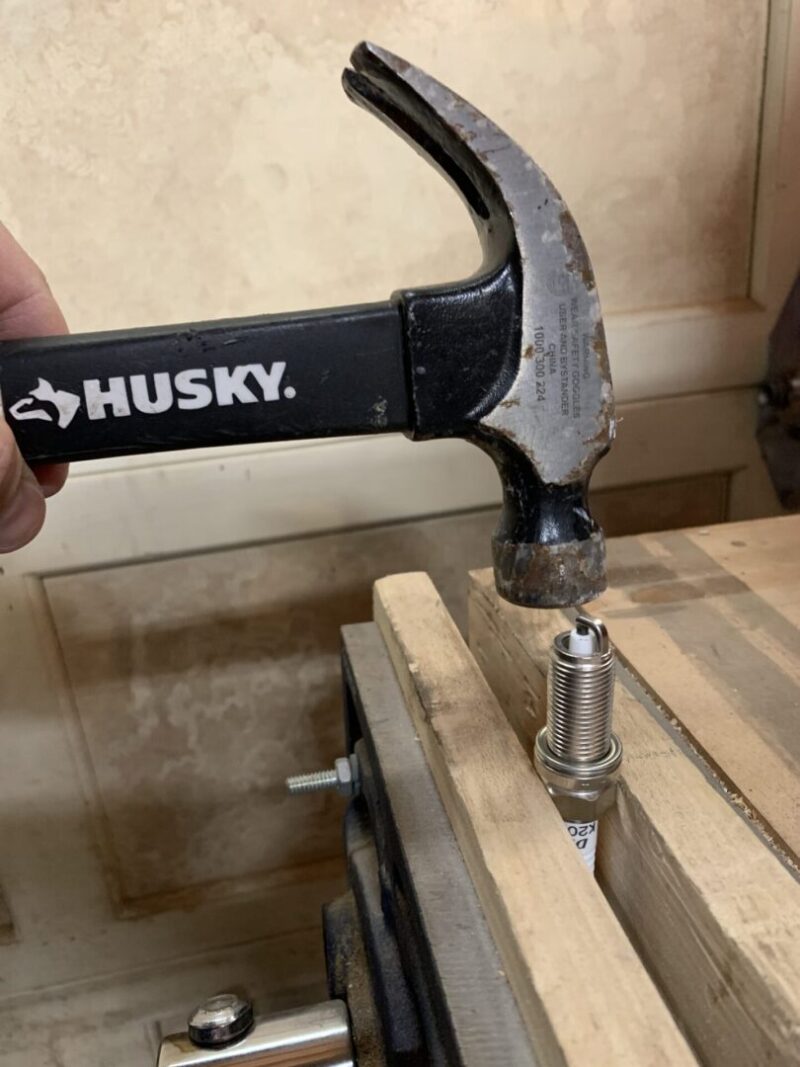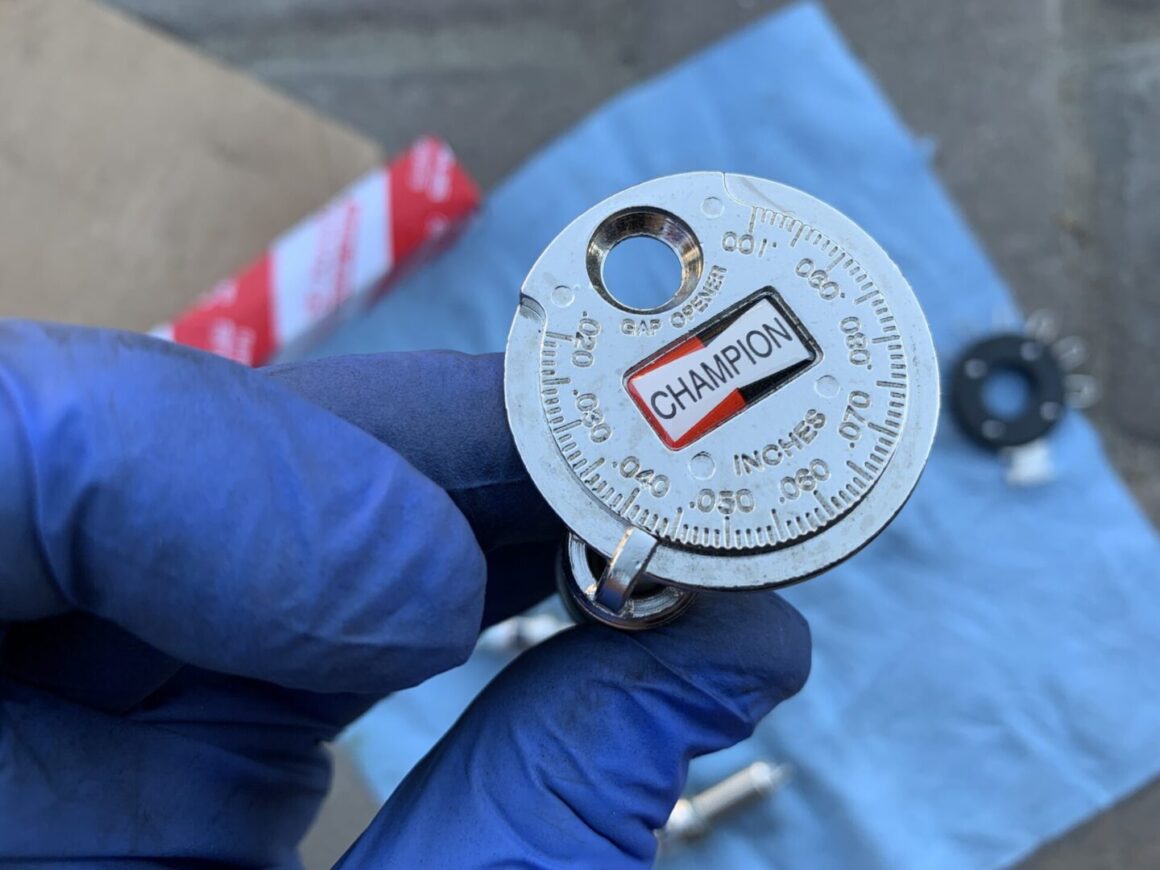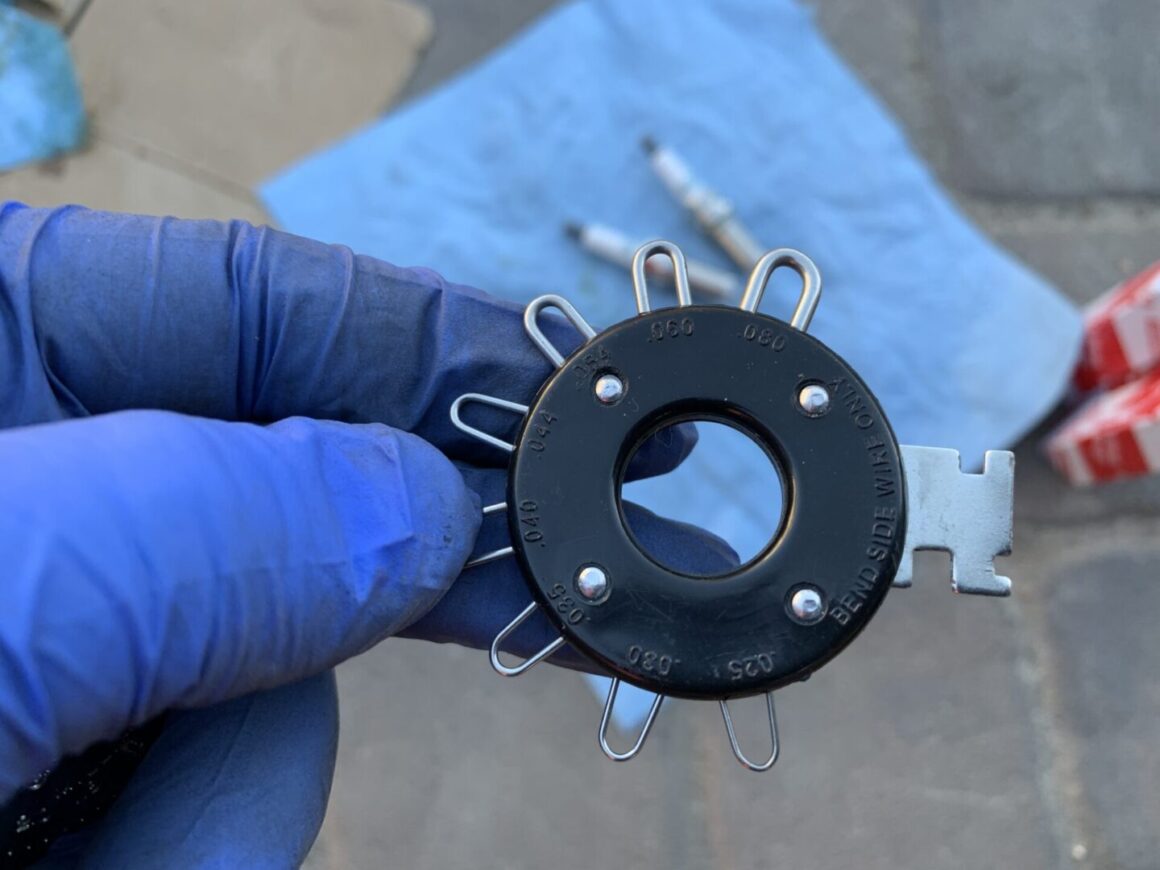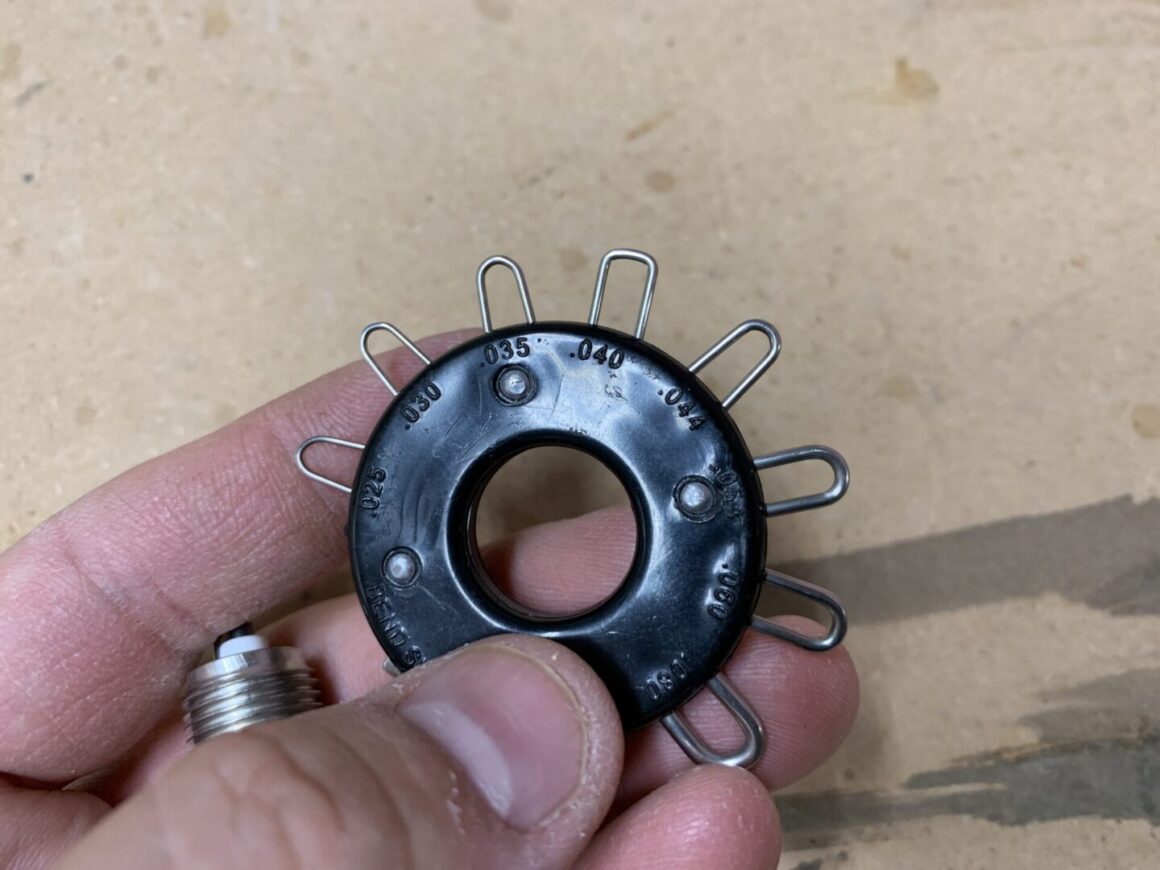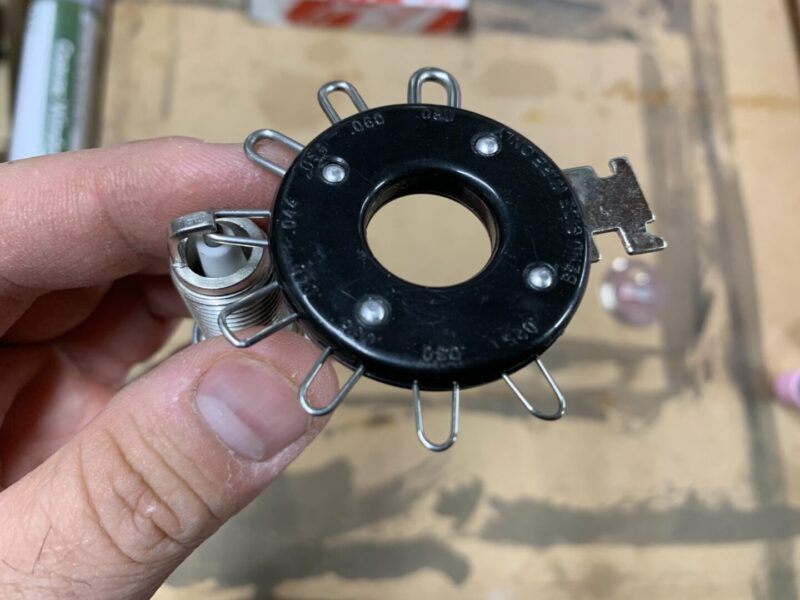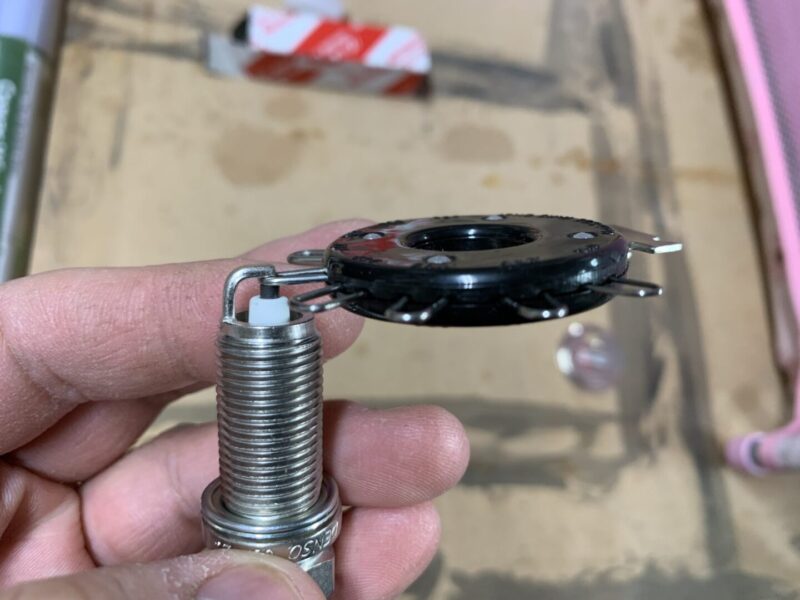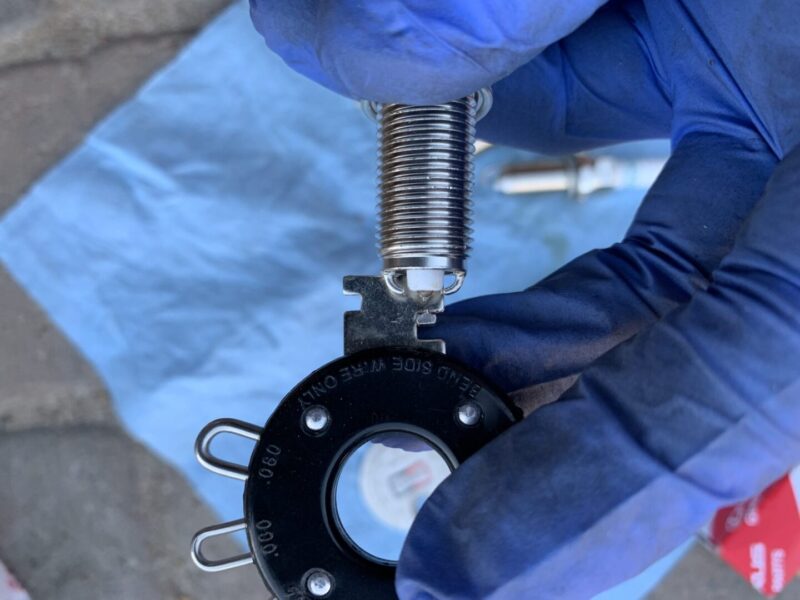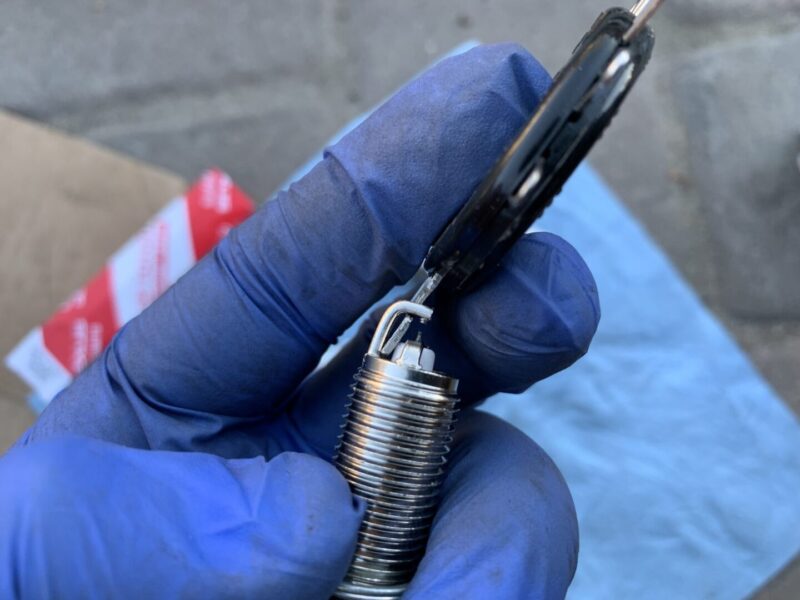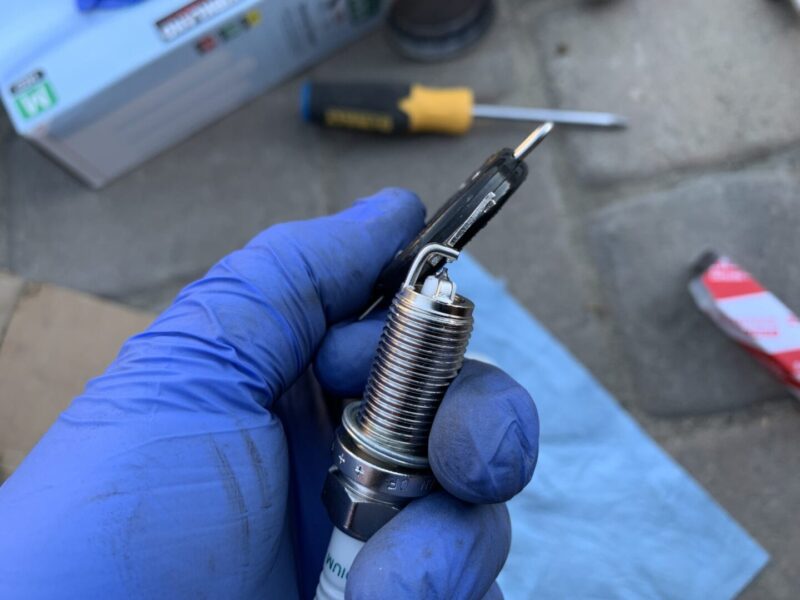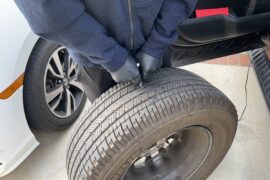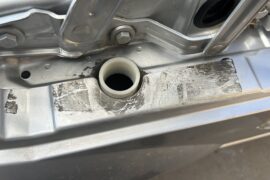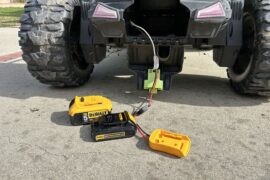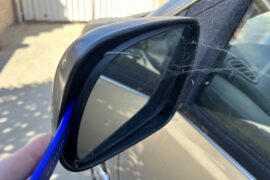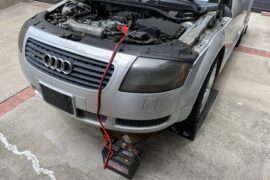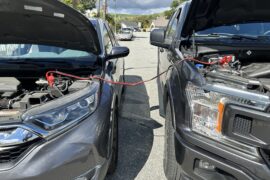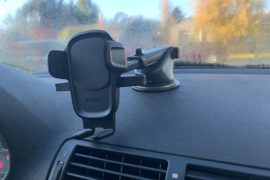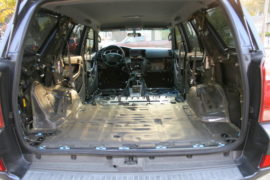When you make purchases through links on this site, The Track Ahead may earn an affiliate commission. Also, these posts are based off my own experiences. I am not responsible for any action you take as a result of reading this. Learn More
About Spark Plug Gapping
Spark plugs play critical role in the engine combustion process by precisely igniting a mixture of air and fuel in order to produce power. If a spark plug is not operating optimally, it can lead to poor engine performance in the form of difficult cold-starting and misfiring of the engine. Because spark plugs need to produce spark at a very specific moment in order for the engine to run smoothly, the gap between the electrodes needs to be gapped properly.
If the gap between the center and ground electrodes is correctly set, then the spark can properly jump between the electrodes. If the gap is too large or too small, it will affect engine performance. Therefore, it is imperative to have the proper gapping in your spark plugs.
In general, you should be following the manufacturer’s gap specifications according to your owner’s manual. Each make and model has its own recommended spark plug gap. When purchasing spark plugs new, they should already be pre-gapped. However, I’ve learned to never trust that they were pre-gapped as I’ve found many spark plugs in the past that had incorrect gapping.
There are several different ways of checking and adjusting spark plug gap with various pros and cons for each method. Most commonly you will see coin style and wire loop gauges being used, but feeler gauges are also used too. I’ve provided a guide below for checking and adjusting spark plugs using the coin style and wire loop gauges, which will work adequately in most cases.
Different Types of Spark Plug Gap Tools
Coin Style
Coin style tools are probably the most common ones you’ll see for gapping spark plugs. As the name suggests, the tool is shaped like a large coin, and has a small opening for enlarging the spark plug gap. Along the circumference, there is a gauge that allows you to run the spark plug electrodes in order to check the gap.
Lisle 67870 Spark Plug Gauge Gap
Wire Loop
Wire loop tools have wire loops along the circumference of various set thicknesses. The spark plug gap can be checked using these loops to get pretty close to the desired gap. On one end of the tool, there is a small double-sided hook that allows you to adjust the gap.
CTA Tools 3238 – 9 Wire Spark Plug Gap Gauge
Feeler Gauge
Feeler gauges are the best option for accurately reading spark plugs safely. There are a number of blades of different thicknesses, which can be placed one over another to produce the exact thickness required. The feeler gauges can also be used with gapping tools for best results.
Hotop 32 Blades Steel Feeler Gauge Metric and Imperial Gap Tool
Spark Plug Gap Tool
This is a specialized spark plug gap tool that allows you to place the spark plug in the tool and tighten down on the tightening knob to close the gap in a safe and controlled manner. Feeler gauge blades can be used with the spark plug to get perfect gapping every time.
PQY Universal Spark Plug Gap Tool – Compatible with Most Spark Plugs
How to Gap a Spark Plug
I’ve mainly focused on gapping the two most common type of spark plug gapping tools: the coin style and the wire loop style tools. Between these two, you can pretty much handle a majority of spark plugs out there. For the ultimate gapping combination, use feeler gauges along with a dedicated spark plug gapping tool. However, most people will get by perfectly fine with either a coin-style tool or a wire loop style tool.
How to Check and Adjust Gap with a Coin Style Tool
Coin-style tools are probably the most common tool out there. They are simple and durable. You can easily measure spark plug gaps using the tapered gauge around the circumference of the tool. If you need to open up the spark plug gap, it has an integrated gap opener.
Take your spark plug and place it into the tool so that the gauge is placed between the two electrodes of the spark plug, starting at the smallest gap reading.
Then slide it over slowly ensuring that it is perfectly perpendicular with the tool until the spark plug cannot go further. You should not apply any pressure, just allow the spark plug to slide across the gauge until it just stops. Where it stops is the gap reading; in the case below, the spark plug gap measures .033 inches.
If you turn the coin-style tool over, you’ll see readings for metric in case you need it.
Now, if the spark plug gap needs to be enlarged, then there is an integrated gap opener that can be used.
The spark plug can be placed into this opening, and then you can pry up on the side ground electrode to open up the gap. Be careful not to contact the center electrode so as to not damage it. Only pry it open just slightly, and check gap again. If you the gap is not enlarged enough, then use the gap opener to pry it more until the gap is large enough. If you opened the gap too much, you must then reduce the gap.
To reduce the gap, you can go about it in two different ways. One, is using the coin-style gap tool as a support, and press down on the ground electrode in a slow and controlled manner until you feel the gap close slightly. Then check the spark plug gap again and make any adjustments as needed. The second method is placing the spark plug into a bench vise (making sure to clamp down on the shell) and then using a hammer to very, very gently tap on the ground electrode to reduce the gap. Then check gap and adjust as needed.
After enlarging/reducing the spark plug gap, you will then get to the manufacturer’s recommended gap. Once you get to the recommended gap value, you have finished gapping your spark plug.
There are a couple downsides to using a cap-style tool for gapping spark plugs. One is that there is no controlled way to reduce the gap on spark plugs with the tool. Using a hammer or pressing down the spark plug on the coin-style is not exactly the most precise way to reduce the gap on a spark plug.
The other downside is that the tapered gauge inherently may damage the center core electrode while checking the gap. Imagine sliding the spark plug along the tapered gauge and having it stop (which you will then get your gap reading.) If you look closely, you’ll see that one side of the center electrode will be in contact with the taper of the gauge, and on the other side of the center electrode, it will not be in contact with the gauge. This in effect is wedging the spark plug into the taper of the gauge. This can damage the electrode especially if it is a more fragile center electrode as you might find with iridium-style plugs.
How to Check and Adjust Gap with a Wire Loop Tool
Checking and adjusting with a wire loop tool gives you a little less accurate spark plug gap readings, but it offers a mini-adjusting tool that makes it safer to adjust gap.
As you can see below, there are a variety of wire loops of different thicknesses. The spark plug tip can be placed into each of these loops, starting from the smaller end and moving up to the larger loops. Once you get to a point where the spark plug fits into the previous wire loop, but does not fit into the next larger loop, then the spark plug gap is between those readings.
The loops are set at specific readings (e.g. .030″, .035″, .040″, etc). Because of this, you might get a reading somewhere between two readings. Therefore, it is a bit difficult to get an exact reading with the wire loop tool. Coin-style tools will get you a more precise reading, but feeler gauges will be the best way to get an exact reading.
When checking the spark plug gap, very gently move the wire loop through the tip of the spark plug between the electrodes to see if it will fit. Obviously if the loop does not go through, the spark plug gap is smaller than that wire loop’s reading. If the loop does go through, then the spark plug gap is larger than that respective loop’s reading.
If you need to adjust the spark plug gap with the wire loop tool, it has a small hook that allows you to do that. As you can see below, you can use the hook to perform a pinching action to decrease the spark plug gap.
Oppositely, you can use the tool to perform a prying-open action to enlarge the spark plug gap. Both ways of adjusting the spark plug gap with this tool lets you do it in a very controlled manner so as not to disturb the spark plug components.
Closing Thoughts
I personally have the coin-style and wire loop spark plug gap tools and have used them for the past ten years without any issues. I’ve gapped platinum and iridium plugs or varying sizes and have very little complaints. I think that if you need to check or adjust spark plugs quite, then it would be worth while investing in some feeler gauges and a dedicated spark plug tool. Otherwise, the coin style and wire loop style work just fine, plus they are very low-cost.
Take into consideration that each tool has its own pros and cons when choosing which spark plug gap tools to use. In general, gapping spark plug is quite simple. Having the right tools makes doing adjusting spark plug gaps very easy to do and will last quite a long time for future jobs to come.

